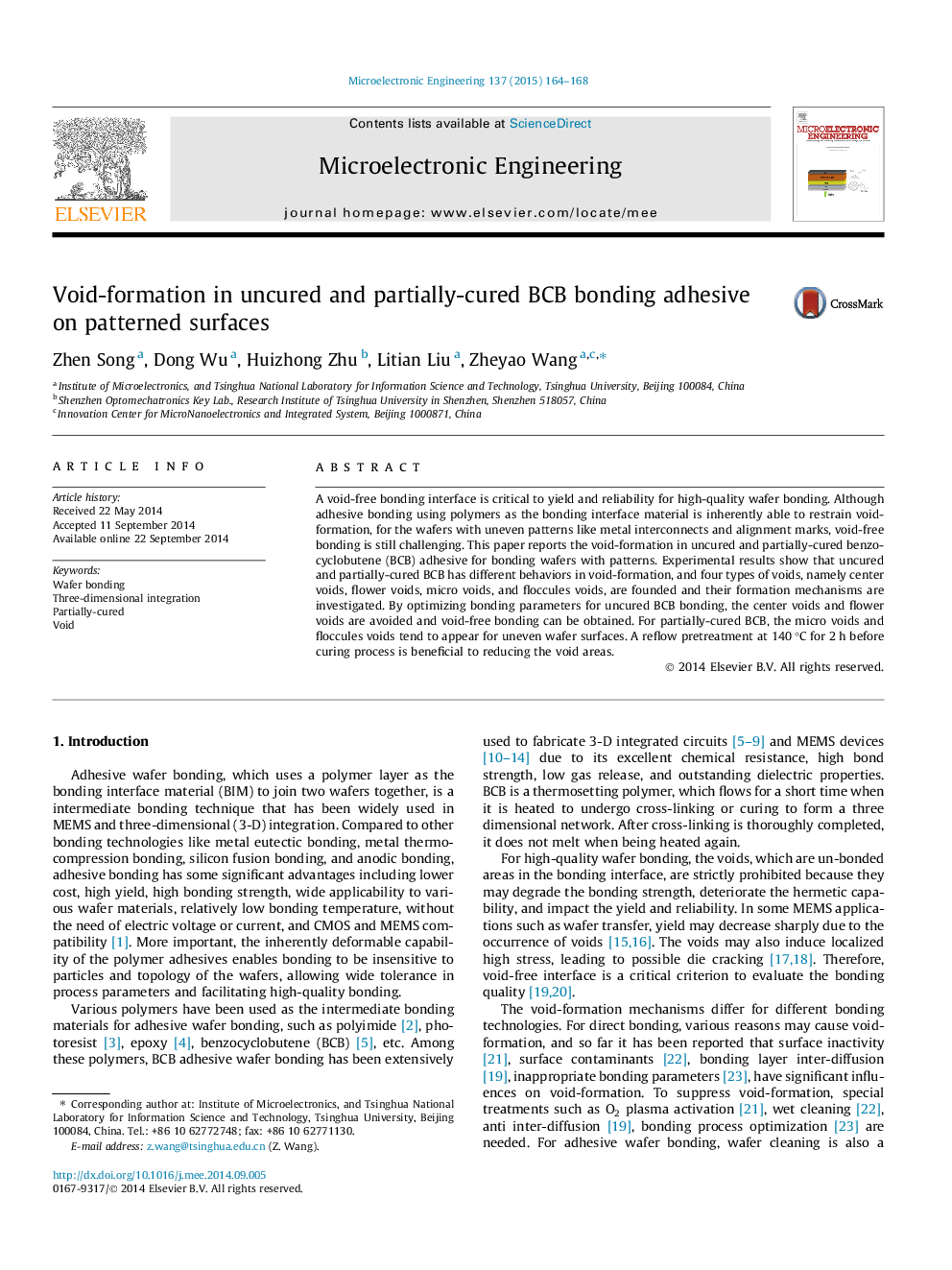| Article ID | Journal | Published Year | Pages | File Type |
|---|---|---|---|---|
| 6943517 | Microelectronic Engineering | 2015 | 5 Pages |
Abstract
A void-free bonding interface is critical to yield and reliability for high-quality wafer bonding. Although adhesive bonding using polymers as the bonding interface material is inherently able to restrain void-formation, for the wafers with uneven patterns like metal interconnects and alignment marks, void-free bonding is still challenging. This paper reports the void-formation in uncured and partially-cured benzocyclobutene (BCB) adhesive for bonding wafers with patterns. Experimental results show that uncured and partially-cured BCB has different behaviors in void-formation, and four types of voids, namely center voids, flower voids, micro voids, and floccules voids, are founded and their formation mechanisms are investigated. By optimizing bonding parameters for uncured BCB bonding, the center voids and flower voids are avoided and void-free bonding can be obtained. For partially-cured BCB, the micro voids and floccules voids tend to appear for uneven wafer surfaces. A reflow pretreatment at 140 °C for 2 h before curing process is beneficial to reducing the void areas.
Related Topics
Physical Sciences and Engineering
Computer Science
Hardware and Architecture
Authors
Zhen Song, Dong Wu, Huizhong Zhu, Litian Liu, Zheyao Wang,
